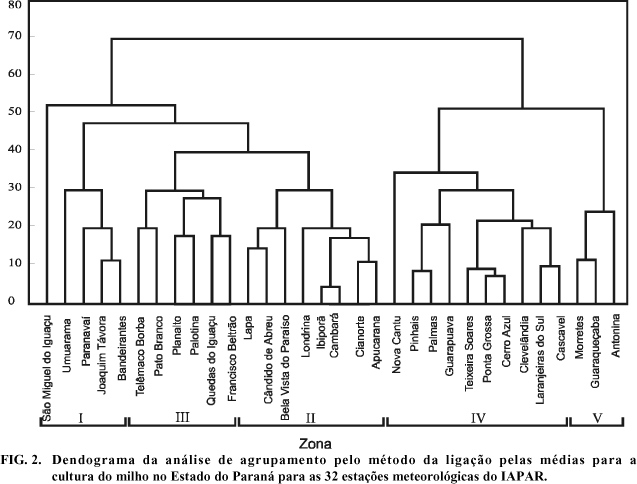The goal of this work was to determine soil water deficit risk and the best sowing periods for maize (Zea mays L.) in the State of Paraná, Southern Brazil. A climatological soil water balance model adapted for maize was simulated, using historical series of daily values of maximum evapotranspiration and precipitation from 32 weather stations. Soil water holding capacity was calculated using an initial soil depth of 20 cm at plant emergence, which increased exponencially up to 80 cm depth at the beginning of plant flowering, and remained constant until harvest. Ten sowing dates spaced at 10 days interval were simulated between August 20 and November 20, and the frequency of soil water deficit during the flowering period (800 degree-days after emergence) was estimated. Using cluster analysis, Paraná State was classified in five homogeneous zones for soil water deficit risk. Results have shown that the North and Northwest regions have very high risk. Appropriate sowing periods with lower risks were identified for all zones.
Zea mays; evapotranspiration; climatic risk; cluster analysis











